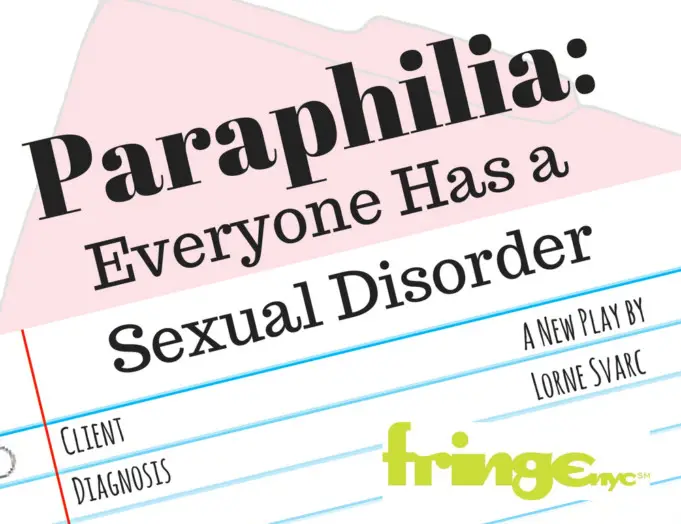Paraphilias are common emotional disorders characterized by sexually arousing urges, fantasies, or behaviors that are intense, recurrent, occur over a significant period of at least six months, and triggers significant distress or interfere with vital aspects of functioning.
- Asides masochism, medical professionals almost only diagnose paraphilias in men.
- There are several different types of paraphilic disorders, each with a unique focus on the victim’s sexual arousal.
- There are so many risk factors for developing paraphilias, and they are biological, psychological, and social risk factors.
- While the particular paraphilia determines the specific sexual stimulant for the paraphilia sufferer, the features of the illness are often always similar.
- For the diagnosis of a paraphilia to be established, mental health professionals will have to conduct a physical examination, medical interview, and routine laboratory tests. The mental health professional will assess the sufferer for any history of mental illness symptoms
- Paraphilic sexual disorders are usually treated with a combination of medication and psychotherapy.
- Paraphilias are very chronic, such that at least two years of treatment is required for even the mildest cases.
- The way to prevention the uprise of any paraphilic behavior often involves taking away the psychosocial risk factors for its development.
What is a paraphilia? What are the different types of paraphilias?
The word paraphilia comes from Greek; para, which means beside or around, and philia, which means love.
Paraphilia is defined as an emotional disorder characterized by sexual arousal of fantasies, behaviors, or urges that are intense, recurrent, occur over a minimum period of six months, and cause significant distress or interfere with the sufferer’s daily life, social function, work, or other important aspects of functioning.
This is not to be confused with sexual variants, which are not disorders but sexual behaviors that are not typical. It is difficult or almost impossible to gauge the number of people who are suffering from paraphilia, and it is so for many reasons.
Many individuals with one of these problems suffer in secret or silence out of fear of being judged or shame, and some of them engage in sexually offensive behaviors and so are neck-deep in not reporting their challenge.
Therefore, most of the estimates on the prevalence of the paraphilic disorder is gotten from the number of people who are involved with the criminal justice system as a result of pedophilia.
Most of the people with this sexual deviation are of the male gender (3%-5% of the male population), with only a recorded 1%-6% of those people being women.
However, there is a high tendency for women to be under-diagnosed with a paraphilia, wrongfully accorded the benefit of the doubt by people assessing their sexual behaviors.
Except for masochism, which has been discovered to be 20 times more rampant in women than men, paraphilias mostly diagnosed in men. Many people who have been diagnosed with one paraphilia have been found to suffer from more than one.
For instance, about one-third of pedophiles have also been found to have another paraphilia. More than half of them engage in three or four of such kinds of behavior instead of one. Most people who have a paraphilia start fantasizing about it before they get to 13 years of age.
According to the most recent standard reference for mental disorders, which is the Diagnostic and Statistical Manual of Mental Disorders, Fifth Edition (DSM-5), there are many different types of paraphilias, individually having a different focus of the victim’s sexual arousal:
- Voyeurism: Watching or spying on an unsuspecting/non-consenting person who is either disrobing, nude, or engaging in sexual activity
- Exhibitionism: Exposing a person’s genitals to an unsuspecting person
- Frotteurism: Rubbing against or touching a non-consenting person
- Sexual masochism: Being beaten, humiliated, bound, or otherwise suffering
- Sexual sadism: The emotional or physical suffering of someone else
- Pedophilia: Sexual activity children that are prepubescent (usually kids13 years old or younger)
- Fetishism: A sexual fascination with nonliving things or highly particular body parts (partialism). Examples of specific fetishisms include somnophilia (sexual arousal by an unconscious person) and urophilia (deriving sexual pleasure from seeing or thinking about urine or urinating)
- Transvestism: Cross-dressing in a sexually arousing manner that interferes with normal functioning.
Autogynephilia is a type of transvestism that refers mainly to men who are aroused by visualizing or thinking of himself with a woman.
- Other specified paraphilia: Some paraphilias are not talked about often as they do not meet the full diagnostic criteria for a paraphilic disorder, but will likely have uncontrolled sexual impulses that lead to problems for the sufferer that they are recognized. Some of such specific paraphilias include scatologia (obscene phone calls), necrophilia (corpses), zoophilia (animals), coprophilia (feces and defecation).
Urges to engage in coercive or otherwise aggressive sex like rape are not symptoms of mental illness. Such sexual offending is therefore not considered a paraphilia.
What are the risk factors and causes of paraphilia?
Biological issues are thought to be the risk factors for paraphilias, including general brain structure and some differences in brain activity during sexual arousal.
Mental health professionals have discovered that male pedophiles have IQ scores that are lower on psychological testing compared to men who do not have paraphilias.
Research has also revealed that these kinds of people tend to have a history of getting lower grades in school and performing poorly at work than their non-pedophilic counterparts, regardless of learning styles and intellectual abilities.
There are several psychological theories about the development of paraphilias. Some people view these disorders as an exhibition of arrested psychosexual development, with the paraphilic character defending the sufferer’s psyche against anxiety ( we can call this a defense mechanism).
Other people believe paraphilias are the outcomes of the sufferer linking something with sexual interests and arousal, or by having an unusual early life sexual experiences that are reinforced by having an orgasm. Some people view these disorders as a different form of obsessive-compulsive disorder.
Psychologically, pedophiles who act on their urges by getting sexually involved with kids tend to engage in some grossly distorted thinking, in that these people use their view and position of power as an appropriate way to satisfy their needs, consider kids to be equal sexual beings to grownups, and feel that their sexual needs as uncontrollable.
Another theory about paraphilia risk factors is that they are connected to several stages of childhood psychological development such as temperament, trauma repetition, early relationship formation, and disrupted development of sexuality, as thus:
- Temperament: A tendency to become uncontrolled or overly inhibited with behaviors and emotions
- Early relationship formation: Seeking comfort and help from other people, a lack of stable self-awareness, problems with managing emotions.
- Trauma repetition: People who are victims of sexual, emotional, and other forms of abuse, especially if it happens during childhood, may identify with the abuser in a way that they act out what they suffered at that early age by victimizing others in one way or another. They may also exhibit the trauma by somehow causing harm to themselves.
- Disrupted development of sexuality: The patterns of what gives a person sexual pleasure tend to develope by adolescence. People who are raised in a household that is either inhibited or excessively sexually permissive or are at higher risk of getting a paraphilia.
The family risk factors for the development of paraphilia include under supervision by parents or high conflict between parents, a lack of affection from the father or mother, and generally not feeling well treated by their folks.
People who have paraphilia tend to have problems making and keeping friends or acquaintances and other relationships.
What are the signs and symptoms of paraphilia?

While the specific paraphilia determines the desired sexual stimulant for a paraphilia, the characteristics of the illness are often very similar.
Specifically, people with a paraphilia tend to experience arousal by the stimulant to the exclusion or near exclusion of more common sources of sexual interest, like an attractive person of similar age.
The intensity of sexual attraction can be overwhelming enough to cause distress. The unusual or forbidden nature of a paraphilia often causes symptoms of fear and guilt of punishment.
Symptoms of paraphilia may include preoccupation with the paraphilia to the point where a person becomes obsessive and allows it to intrude on any attempt to think about anything else or take part in more conventional sexual activity with an age-appropriate partner.
Paraphilia sufferers may experience depression or anxiety that is temporarily relieved by engaging in paraphilic behavior, thus leading to an addictive cycle.
How do health professionals diagnose paraphilias?
Usually, people who provide mental health care are left with the job of making the diagnosis of paraphilias, including psychiatric nurses, licensed mental health therapists, psychologists, psychiatrists, psychiatric nurses, physician assistants, and social workers.
One of these people will likely carry out an extensive medical review or refer the person dealing with the paraphilia for a medical exam or a comprehensive medical interview and physical examination to enable them to establish the diagnosis.
To ensure that the paraphilic person does not have any other medical condition that may complicate the treatment or assessment of their mental health condition, medical professionals usually perform routine lab tests during the early evaluation.
As part of this examination, the sufferer may be asked to answer a series of questions from a self-test or standardized questionnaire to help assess the existence of paraphilic symptoms.
A mental health professional will carry out a careful exploration of any history or existence of all mental health symptoms in a way that paraphilia can be Separated from other forms of mental disorders.
People who have pedophilia may also deal with a mood disorder or a personality disorder, and about 60% of them have an extra paraphilia, like sadism, exhibitionism, or voyeurism.
To require the diagnosis of a paraphilic disorder, a person must have to experience significant, recurrent, sexual arousal by sight or thought of the object that attracts them; act on that attraction in actions, urges, or fantasies; and experience the symptoms for a minimum of six months to the point where the individual suffers significant levels of distress or interference with his or her work, education, social function, or other essential aspects of life.
What is the treatment for paraphilia?
There are no researches on the treatment for paraphilias except those that focus on pedophilia. This is mostly because of the terrible impact this behavior has on victims and because of the involvement of pedophiles with the justice system.
Those studies have revealed that treatment can only work if the individual with pedophilia is motivated enough and committed to controlling his or her harmful behavior and when the treatment combines medication and psychotherapy.
Psychotherapy for both pedophilia and other types of paraphilia tends to adopt cognitive behavioral therapy.
The goal of psychotherapy usually is to be of help to the person dealing with pedophilia by making them recognize and fight off rationalizations about their behavior and also by training the person with pedophilia in developing empathy for their target victims and in basic techniques to help with controlling their sexual impulses.
This therapy tends to adopt an approach for treating sexual offenders with the aid of a relapse prevention model that is alike in many ways to treating people dealing with drug addiction.
This method tries to help the person with a paraphilia to get into situations that increase their chances of sexually acting out and looking for ways to either avoid those triggers or more productively respond to them.
People who have paraphilias may benefit from social skills training to help them develop relationships that are age-appropriate and reciprocal.
Medications that can suppress the production of testosterone, which is the male hormone reduce the intensity or frequency of sexual desire in people with pedophilia.
It may take between three to 10 months a testosterone suppression treatment to reduce sexual desire in pedophiles or other people with paraphilias.
Studies of the potency of selective serotonin reuptake inhibitors (SSRIs) in the treatment of pedophilia and other paraphilias vary in their effectiveness or findings.
However, SSRIs may be a treatment method, because they tend to help decrease sexual urges and obsessiveness that are associated with paraphilias and may assist with increasing the ability of the paraphile’s to control his or her impulses.
Some examples of SSRI medications include sertraline (Zoloft), fluoxetine (Prozac), paroxetine (Paxil), escitalopram (Lexapro), citalopram (Celexa), and vortioxetine (Trintellix).
There are several preliminary research that stimulant medications such as methylphenidate (Ritalin) can promote the effectiveness of SSRIs, and the drug called naltrexone can reduce some of the sexual obsessiveness connected with paraphilias.












